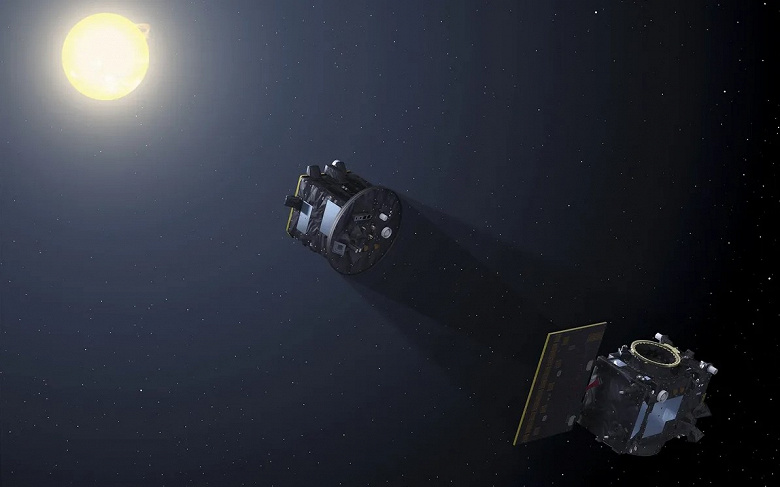Two spacecraft will study the solar corona and help better predict its activity
Last week at a press conference, the European Space Agency (ESA) presented details of a mission to create artificial solar eclipses. Scheduled for the end of this year, the mission, called Proba-3, promises not only unique scientific discoveries, but also technological advances that will open new horizons in the study of the Sun.
The essence of the mission is to launch a pair of spacecraft: Coronagraph weighing 300 kilograms and Occulter weighing 250 kilograms. These devices will be delivered into orbit using the Indian PSLV rocket in September this year. After launch, they will enter a highly elliptical orbit measuring 600 by 60,530 kilometers. The main goal of the mission is to place the spacecraft approximately 144 meters apart so that Occulter can obscure the Sun.
This move will allow Coronagraph to study the highly ionized and extremely hot atmosphere of our star, as well as demonstrate artificial eclipse technology as a harbinger for future projects.
The science goals for Proba-3 include using space-based observations to study solar astrophysics without being distorted by Earth's atmosphere. One of the mission's key instruments, the ASPIICS (Association of Spacecraft for Polarimetric and Imaging Investigation of the Corona) coronagraph, will provide a deeper understanding of the phenomenon of why the solar corona is significantly hotter than the Sun itself. This could better study our star and improve predictions of solar activity.
However, the key element to Proba-3's success will be precision. The two spacecraft will be aligned to create eclipses lasting about six hours in orbit. To ensure positioning accuracy, GNSS navigation satellite system receivers and optical sensors located on the Occulter satellite will be used.
Optical sensors «Occulter» will «see» pulsating LEDs «Coronagraph» and provide data for more accurate measurements. But greater precision at the millimeter scale requires even more technological wizardry. To do this, Occulter will aim a laser at a reflector mounted on the Coronagraph satellite, which will reflect the beam back. This act of metrology will allow the relative position and orientation of spacecraft to be accurately monitored. Using the collected data, the satellite will be able to monitor and maintain millimeter-level accuracy.
Damien Galano, Proba-3 project manager, expressed confidence in the significance of the mission: «We have a real scientific application — observation of the solar corona. By achieving good data quality, we will demonstrate that the equipment works and that the technology provides up-to-date scientific data. He also noted that the Proba-3 group's flight control algorithms and metrology systems could be applied to future missions.
So, Occulter opens up new prospects for joint use with space telescopes to detect exoplanets and other astronomical objects. A constellation of spacecraft, including Proba-3, could provide the basis for large-scale space observatories using interferometry, allowing for much larger apertures and focal lengths than are possible with large single satellites.
In addition to studying solar activity, Proba-3 could provide the basis for a variety of applications, including Earth observation, space-based gravitational wave detection, and missions requiring multi-spacecraft collaboration such as rendezvous, docking, and in-orbit servicing.
Before undertaking such complex projects, Proba-3 must demonstrate its ability to achieve its stated goals. If successful, Proba-3 could surpass the work of previous space coronagraphs and light the way for future complex space operations.

